The Theological School of St. Lawrence University in Canton, New York, also known as the Canton Theological School, received its charter in 1856, the first of three such Universalist seminaries founded in America during the nineteenth century. (The others were the Crane Divinity School at Tufts and the Ryder Divinity School at Lombard College.) It closed in 1965 during the restructuring that accompanied the consolidation of the Universalist Church of America and the American Unitarian Association. During the 109 years of its existence the school made a modest, consistent, and valuable contribution to the development of liberal religious leadership and thought.
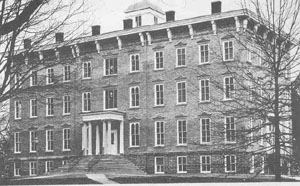
Thomas Jefferson Sawyer led the campaign to establish a theological school in the New York State. The town of Canton, located in the extreme northern part of the state, had been chosen by the state convention as the university’s location; Canton’s offer of $15,000 had been higher than that of any other municipality. Canton had stipulated that a non-sectarian college of letters and science be part of the university. The charter was granted to “The St. Lawrence University and Theological School,” thereby linking a sectarian school “especially intended and organized for preparation and training persons for the ministry of the Universalist Church” with a non-sectarian university. The two schools held separate funds, but shared a president, a board of trustees, and Richardson Hall, the university’s only building. Sawyer was offered the presidency, but declined, partly because he thought the location too isolated.
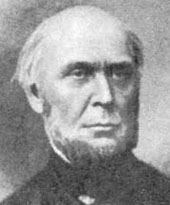
In 1858, during a late spring snowstorm, inaugural exercises for the university were held at the local Universalist church. By then four students had been enrolled in the theological program. The university’s president, Ebenezer Fisher, a self-educated clergyman, was the only faculty member. When, in 1869, Tufts opened its own divinity school, Sawyer, who had just joined its faculty, tried to persuade Fisher to join him. An increase to the endowment of the chair occupied by Fisher, making it the Dockstader Professorship of Moral Science and Systematic Theology, convinced Fisher to remain at Canton.
The Theological School held its first graduation ceremony in 1861, four years before the University held its own first graduation. One of the early graduates, Olympia Brown, 1863, in that same year became the first woman in America to receive ordination with full denominational authority. Fisher had opposed her going into the ministry, but after she had received fellowship from the Northern Association, he participated in her ordination.
At first Fisher, the only faculty member, taught a variety of courses. Soon, however, the faculty was strengthened by the addition of John Stebbins Lee, who taught church history and archeology, 1859-1902; Massena Goodrich, who taught Biblical languages and literature, 1860-62; and Orello Cone, Goodrich’s successor, who taught Biblical languages and literature, 1865-80. Goodrich served as president of Buchtel College in Akron, Ohio, 1880-1900, then returned to the Canton school’s faculty.
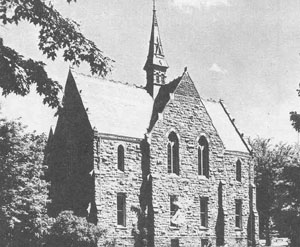
On Fisher’s death, he was succeeded as president by Isaac Morgan Atwood, 1879-98, an experienced minister. Early in his tenure Fisher Hall, a memorial to the first president, was constructed as the school’s permanent home. This left Richardson Hall for the exclusive use of the College of Letters and Science. By then the school and the college each had its own president. Atwood worked closely with Absalom Gaines, his counterpart from the college, in the task of raising funds to keep school and college in operation.
In addition to Atwood, who taught a variety of courses, the faculty during this period consisted of two holdovers, Lee and Cone; Henry Prentiss Forbes, Cone’s replacement, who became dean at Atwood’s departure; and Lewis B. Fisher, who taught pastoral theology and sociology, 1891-1904, then became president of Lombard College. Atwood resigned his presidency to serve as the first general superintendent of the Universalist General Convention, 1898-1907, and secretary of the General Convention, 1906-12. He then returned to Canton, serving until his death in 1917 as university professor of theology and philosophy and minister of the local Universalist church.
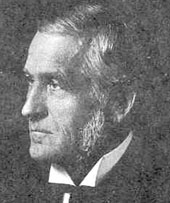
Henry Prentiss Forbes, the first of the school’s leaders to be designated as dean rather than president, served from 1899 until his death in 1913. During his tenure, in 1910, the close relation of school and college came to and end. In order to make its faculty eligible for Carnegie pensions and to attract other funds, the college reaffirmed its non-sectarian status, amended its charter, and appointed a new board of trustees with no Universalist connection. The school was incorporated separately as “the Trustees of the Theological School of St. Lawrence University,” with a new board appointed by the New York State Convention.
Forbes continued on the faculty during his deanship, as did Lee and Fisher. Lee, however, died in 1902 and Fisher left for Lombard in 1904. Cone, who had returned in 1900, died in 1905. Two new faculty members, John Murray Atwood and George Ezra Huntley, were added that year. Atwood, who had been an instructor at the school in 1898-99, became Richardson Professor of Sociology and Ethics and, a year later, Professor of Biblical Languages and Literature. Huntley became Ryder Professor of Homiletics and Pastoral Care. He offered Canton’s first courses in religious education. Herbert Philbrook Morrell joined the faculty in 1912 and taught sociology and ethics until 1938. A pacifist, he was severely criticized during the First World War.
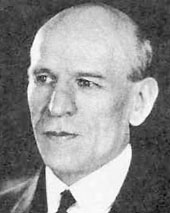
John Murray Atwood assumed the deanship in 1914. He served until his death in 1951, a period that spanned two world wars and the Great Depression. The school was handicapped during this time by a sharp denominational decline and competition for Universalist seminarians from seminaries other than St. Lawrence or Crane.
For a few years around 1950, this trend was counteracted in a small way by the admission of several students under the care of the Northern New York Methodist Conference. Among them was David Pohl, who, after graduating in 1954 with dual fellowship, accepted a call to the First Parish in Bedford, Massachusetts, where he was ordained to the Unitarian ministry, later becoming Director of Ministry for the Unitarian Universalist Association.
During this period, in addition to Atwood, Huntley, who continued until 1917, and Morrell, who continued until 1938, the faculty consisted of Edson Russell Miles, who taught homiletics and practical religion, 1917-48; Bruce Brotherston, who taught religious education and ethics, 1924 -29; Angus MacLean, who taught religious education, 1928-60; E. Parl Welch, who taught history and philosophy of religion, 1939-40; Max Kapp, who taught homiletics and philosophy of religion from 1942-1965; Myles William Rodehaver, who taught sociology, 1947-55; and Ellis E. Pierce, who taught Biblical languages and literature, 1948-55.
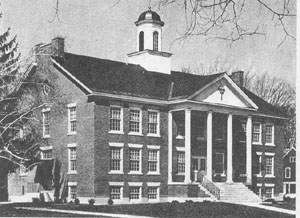
Atwood died in 1951, a few weeks after his resignation as dean. MacLean was quickly chosen as his successor, only a few weeks before Fisher Hall was destroyed by fire. Reluctant to end their cooperation with the university, the school decided to remain in Canton rather than to move to a less isolated location. It operated in a former barracks building, in what had become known as “Vetsville,” for three years while a fund-raising campaign was carried out and a new building, Atwood Hall, was constructed. The dedication of Atwood Hall in 1955 and the celebration of the 100th anniversary of the founding of the university and school in 1956 were highlights of MacLean’s tenure as dean.
The faculty during this period consisted of MacLean, Kapp, Rodehaver, and Pierce, the latter two leaving in 1955, plus Robert Berg Tapp, professor of theology, 1952-60; Morton Scott Enslin, professor of Biblical languages and literature, 1955-65; and Robert LeRoy Cope, professor of religious education, 1957-60. Enslin was a distinguished Biblical scholar who, after 30 years, had been forced out of the Crozer Theological Seminary in Philadelpia because of his Christological views. It is worth noting that at this time, and all during the school’s history, members of the theological school faculty also taught courses in the university and university students took courses at the school.
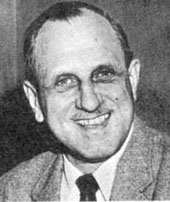
In 1960 MacLean retired to accept a call to be minister of religious education at the First Unitarian Church of Cleveland at Shaker Heights. At commencement the university honored him with a Doctor of Divinity degree. Max Kapp, who had served under MacLean as assistant dean, was appointed to take his place. The faculty was strengthened by the addition of Unitarian scholars Alfred P. Stiernotte and David Boynton Parke, in theology and church history respectively. A $250,000 gift to the school from Thomas Peterson, a Cleveland industrialist, enabled the 1961 appointment of Hugo Holleroth as Angus MacLean Professor of Religious Education. For the first time the faculty was not predominantly made up of alumni. The trustees hoped that the school might in time become accredited by the American Association of Theological Schools. The 100th anniversary of Olympia Brown’s ordination was celebrated and the Edson R. Miles memorial reredos in the Atwood Hall chapel were dedicated. Kapp planned a major capital fund drive to strengthen the faculty and library.
Challenges arising from the Unitarian-Universalist consolidation soon proved insurmountable. The proposed fund drive was disallowed because it had not been funneled through proper Unitarian Universalist Association (UUA) channels. Moreover, Harold Taylor, a progressive educator appointed by the denomination to evaluate the four Unitarian Universalist seminaries, was highly critical of the school and its curriculum. Subsequently a UUA committee chaired by Raymond B. Johnson, former director of the Unitarian Department of Ministry, recommended that the school be merged with Crane on the Tufts campus. Morale among the students suffered badly, with several transferring to other seminaries. Merger possibilites , not only with Crane, but also with Meadville Lombard and Starr King, were explored. Nevertheless in 1964 the trustees voted to close the school the following year and to create a foundation (the St. Lawrence Foundation for Theological Education) through which to promote the education of leaders for Unitarian Universalist churches. Atwood Hall, under terms established earlier, became property of the university. At the school’s final commencement, ministerial degrees were awarded to five men, three of whom, along with three women, also received certification in religious education. It was a bittersweet occasion.
As for the faculty, Kapp was appointed UUA Director of Overseas and Interfaith Relations. Holleroth accepted a position with the UUA Department of Religious Education. Parke was called to the ministry of the prestigious Germantown Church in Philadelphia. Stiernotte had returned to academic life in 1964. Carl Hermann Voss, who had taught theology and history of religions during the school’s final year, returned to scholarly work. The Canton church, which had played an important role in the founding of the school in 1856 and had maintained a close, informal relationship with it over the years, survived.
Following the closing of the school there was a long and bitter legal fight between the trustees of the school and those of the university for the school’s assets, amounting to approximately one and a quarter million dollars. In 1967 the courts decided in favor of the school.
When in 2006 St. Lawrence University celebrated its sesquicentennial, the importance of its Universalist heritage, long dismissed as something of an embarrassment, was enthusiastically celebrated. Former students of the theological school were invited back for a reunion, among them Richard Gilbert and David Weissbard, both of whom made special presentations. Two important gifts were received, one from the St. Lawrence Foundation to support the Universalist recognition during the celebration, the other from an anonymous donor to renovate the chapel in Atwood Hall, transforming it into a nondenominational center for prayer and meditation. Thus the Theological School remains, not only as an important part of the history of St. Lawrence University, but also as a tangible presence.
Presidents and Deans:
| President / Dean | Years served | Graduates | Min Assts | RE certs | |
| (men) | (women) | ||||
| E. Fisher | 1856-1879 | 108 | 5 | ||
| I. M. Atwood | 1879-1898 | 111 | 9 | ||
| H. P. Forbes | 1899-1913 | 46 | 7 | ||
| J. M. Atwood | 1914-1951 | 76 | 5 | 6 | 35 |
| A. MacLean | 1951-1960 | 29 | 2 | 17 | |
| M. Kapp | 1960-1965 | 20 | 1 | 16 |
Some well-known graduates
| James M. Pullman | 1861 | brother of railroad car magnate, George M. Pullman |
| Olympia Brown | 1863 | first woman in America to receive ordination with full denominational authority |
| Herman Bisbee | 1864 | forced out of Universalist fellowship in 1872 because of his heretical beliefs |
| Almon Gunnison | 1868 | president of St. Lawrence University in 1899 |
| Quillen Hamilton Shinn | 1870 | famous for his missionary work in the South |
| Henry Prentiss Forbes | 1873 | dean of the theological school in 1899 |
| Florence Kollock Crooker | 1875 | with her husband Joseph, a Unitarian minister, was active in the Liberal Congress during the 1890s |
| Lewis B. Fisher | 1881 | became a member of the faculty |
| Richard Eddy Sykes | 1885 | the first in his family to be involved in the university |
| John Murray Atwood | 1892 | dean of the school in 1914 |
| George Ezra Huntley | 1894 | a member of the faculty and a leader in the Universalist Sunday school program |
| Harry Westbrook Reed | 1899 | served on a Universalist-Unitarian committee exploring formation of a “Free Church Fellowship” |
| John Smith Lowe | 1901 | Universalist general superintendent in 1917 |
| Fred Charles Leining | 1903 | superintendent of the New York State Convention and chair of the Universalist Board of Foreign Mission |
| Elmo Arnold Robinson | 1912 | a parish minister, college professor, and denominational historian |
| Harold Herbert Niles | 1914 | St. Lawrence university chaplain |
| Helene Ulrich | 1922 | a leading religious educator |
| Emerson Hugh Lalone | 1923 | editor of the denominational newspaper |
| Gustav H. Ulrich | 1927 | worked with refugees in Germany following World War II |
| Max A. Kapp | 1928 | joined the faculty in 1942 and served as the last dean |
| Robert Killam | 1933 | served as minister of several prominent churches and as chairman of the Canton board of trustees, 1961-62 |
| Jeffrey Campbell | 1935 | first African American graduate, a leading civil rights activist |
| Brainard Gibbons | 1939 | president of the Universalist Church of America in 1951, then the general superintendent |
| Robert Cope | 1946 | joined the faculty in 1957 |
| Gene Navias | 1951 | a leader in religious education |
| Carl Westman | 1951 | minister of several prominent churches |
| Rhys Williams | 1953 | minister of the First & Second Church in Boston |
| David Pohl | 1954 | head of the UUA Department of Ministry |
| Richard Gilbert | 1961 | leading advocate of social change |
| Nancy Wynkoop Doughty | 1961 | distinguished religious educator and parish minister |
Some well-known recipients of religious education certification:
Janet Hartzell Bowering, Toshio Yoshioka, Patricia Bateman Cope, Rebecca Ulrich, Edgar Lawrence, Betty Bolden Baker, Jane Welch Lauriat, Anna Dowty Cope, Carolyn Reamon McMahon, Lucille Smith, and Christine Wetzel.
Among graduate minister assistants: Mary Slaughter Scott.
There are archives at St. Lawrence University and at Andover-Harvard Theological Library: Universalist Collection. Histories of St. Lawrence University and its theological school: Louis H. Pink and Rutherford E. Delmage, Candle in the Wilderness: A Centennial History of the St. Lawrence University, 1856-1956 (1957); St. Lawrence University Magazine, Report of Appreciation (2002-2003); Max Kapp and David Parke, 109 Years: An Account of the Theological School of St. Lawrence University 1856-1965 (n.d.) and 120 Years: An Account . . . 1856-1976, third edition with foreword by Charles A. Howe (1983). See accounts of Universalist seminaries in Richard Eddy, Universalism in America (1884-86); Russell Miller, The Larger Hope (1979-85); and Russell Miller, “A History of Universalist Theological Education,” Proceedings of the UU Historical Society (1984). The life of the first president is George H. Emerson, Memoir of Ebenezer Fisher, D.D. (1880).
Article by Charles A. Howe
Posted July 24, 2006